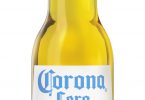Pubs could lose potential €976 million

“Food-led pubs will fare better, many of whom will look to re-license as restaurants,” states the report.
The White Paper, Covid-19 Impact on Irish foodservice Industry, charts three possible scenarios as the industry moves to a phased re-opening “in a transformed operating environment”.
Developed to equip the industry and Irish food and drink suppliers servicing this key market with data and insights as they plan for the second half of 2020, the White Paper outlines a ‘best’ to ‘worst’ case scenario as well as key trends, recommendations and supports available for businesses across the sector.
The scale of the challenge
Taking market values as published by Bord Bia to the end of 2019, the White Paper, co-authored by global foodservice research specialists Technomic, outlines three possible scenarios for the country’s 8,115 pubs which between them saw revenues of €1.415 billion last year (indicating a Category Annual Growth Rate of 2.0%).
According to the report, pubs and hotels have generated virtually no revenue since March the 15th when the government issued its stay-at-home order.
In the ‘best’ case scenario the Pubs/Drinking Establishments sector would witness a drop of 60% in business comprising a 15% drop from January to March, a 97% drop April to June, a 76% drop from July to September and a 49% drop for the last Quarter of 2020. This would reduce the pubs’ share of Foodservice Turnover from 16% to 12%.
A ‘middle ground’ scenario sees consumer spend in the Pubs/Drinking Establishments sector fall by 65% comprising a 15% fall in January to March 2020, a 97% fall in Q2, an 82% fall in Q3 and a 63% fall in the last Quarter of the year.
Finally, a ‘worst’ case scenario would see a 69% fall-off of consumer spend in this sector comprising a 15% fall from January to March, a 97% drop in Q2, an 87% fall in Q3 and a 76% fall in consumer spend in the October to December 2020 Quarter.
| 2019 Irish Foodservice Market | 2019 Consumer Spending (€M) | 2018-19
CAGR |
Total Outlet Count 2019 |
| Limited Service (QSR, fast casual, food to go) | € 2,995 | 4.9% | 9,035 |
| Full Service Restaurants | € 1,039 | 4.6% | 3,750 |
| Pubs | € 1,415 | 2.0% | 8,115 |
| Coffee Shops and Cafes | € 482 | 5.7% | 2,445 |
| Hotels & Accommodation | € 1,531 | 6.0% | 1,080 |
| Other Commercial | € 330 | 6.2% | 1,050 |
| Total Commercial | € 7,792 | 4.6% | 25,475 |
| Business and Industry | € 327 | 4.4% | 2,095 |
| Healthcare | € 241 | 2.3% | 1,140 |
| Education | € 152 | 3.0% | 4,940 |
| Other Institutional | € 42 | 3.0% | 200 |
| Total Institutional | € 763 | 3.4% | 8,375 |
| Total IOI | € 8,554 | 4.5% | 33,850 |
| Republic of Ireland | € 6,325 | 4.9% | 27,205 |
| Northern Ireland | € 2,230 | 3.5% | 6,645 |
Source: Bord Bia Irish Foodservice Market & Consumer Insights – November 2019
| 2020 estimate of Irish Foodservice Market | Best Case Forecast | 1Q2020 | 2Q2020 | 3Q2020 | 4Q2020 |
| Limited Service | -37% | -8% | -75% | -40% | -23% |
| QSR | -35% | -8% | -76% | -34% | -18% |
| Fast Casual | -47% | -8% | -79% | -60% | -41% |
| Food to Go | -44% | -6% | -74% | -58% | -37% |
| Full Service | -50% | -13% | -88% | -64% | -36% |
| Pubs/Drinking Establishments | -60% | -15% | -97% | -76% | -49% |
| Coffee Shops | -25% | -8% | -54% | -21% | -15% |
| Hotels and Accommodation | -53% | -10% | -88% | -72% | -40% |
| Other Commercial | -60% | -10% | -88% | -74% | -68% |
| Total Commercial | -46% | -10% | -83% | -56% | -34% |
| Noncommercial | -30% | -6% | -58% | -37% | -23% |
| Business & industry | -43% | -7% | -76% | -49% | -41% |
| Healthcare | -10% | -1% | -18% | -14% | -10% |
| Education | -37% | -13% | -95% | -46% | -11% |
| Other Institutional | -4% | -1% | -6% | -5% | -4% |
| Total All | -45.0% | -10% | -81% | -55% | -33% |
Source: Bord Bia Irish Foodservice White Paper – May 2020
| 2020 estimate of Irish Foodservice Market | Middle Ground Forecast | 1Q2020 | 2Q2020 | 3Q2020 | 4Q2020 |
| Limited Service | -43% | -8% | -78% | -51% | -32% |
| QSR | -41% | -8% | -79% | -47% | -27% |
| Fast Casual | -51% | -8% | -80% | -64% | -50% |
| Food to Go | -48% | -6% | -74% | -62% | -47% |
| Full Service | -57% | -13% | -90% | -73% | -54% |
| Pubs/Drinking Establishments | -65% | -15% | -97% | -82% | -63% |
| Coffee Shops | -30% | -8% | -60% | -29% | -21% |
| Hotels and Accommodation | -60% | -10% | -90% | -80% | -57% |
| Other Commercial | -64% | -10% | -88% | -81% | -76% |
| Total Commercial | -52% | -10% | -85% | -65% | -47% |
| Noncommercial | -38% | -6% | -61% | -51% | -40% |
| Business & industry | -53% | -7% | -81% | -67% | -59% |
| Healthcare | -11% | -1% | -18% | -16% | -13% |
| Education | -53% | -13% | -95% | -70% | -51% |
| Other Institutional | -7% | -1% | -8% | -11% | -10% |
| Total All | -51.1% | -10% | -83% | -64% | -46% |
Source: Bord Bia Irish Foodservice White Paper – May 2020
| 2020 estimate of Irish Foodservice Market | Worst Case Forecast | 1Q2020 | 2Q2020 | 3Q2020 | 4Q2020 |
| Limited Service | -49% | -8% | -81% | -62% | -42% |
| QSR | -48% | -8% | -82% | -60% | -37% |
| Fast Casual | -55% | -8% | -81% | -68% | -60% |
| Food to Go | -51% | -6% | -74% | -67% | -58% |
| Full Service | -65% | -13% | -91% | -83% | -72% |
| Pubs/Drinking Establishments | -69% | -15% | -97% | -87% | -76% |
| Coffee Shops | -34% | -8% | -67% | -37% | -26% |
| Hotels and Accommodation | -67% | -10% | -93% | -88% | -73% |
| Other Commercial | -68% | -10% | -89% | -88% | -84% |
| Total Commercial | -58% | -10% | -87% | -74% | -59% |
| Noncommercial | -46% | -6% | -63% | -66% | -57% |
| Business & industry | -64% | -7% | -86% | -84% | -77% |
| Healthcare | -12% | -1% | -18% | -18% | -16% |
| Education | -69% | -13% | -95% | -95% | -90% |
| Other Institutional | -11% | -1% | -10% | -18% | -16% |
| Total All | -57.2% | -10% | -85% | -73% | -59% |
Source: Bord Bia Irish Foodservice White Paper – May 2020
According to the report, “Pubs are further restricted until early August. Even as the industry begins to reopen, additional challenges remain with social distancing capacity constraints that are currently in the guidelines and these rules may prevent many outlets from operating at a level needed to cover fixed costs, much less allow them to generate a profitable existence”.
This paper was drafted last month and assumptions are built on a 2020 month-by-month evaluation of the impact of Covid-19 against the baseline 2019 monthly revenue numbers. They’re also built against forecast 2020 revenue figures as developed jointly by Bord Bia and Technomic.
Each scenario includes and incorporates the historic impact of seasonality and other historical peaks and troughs of sales for each segment.
Based on a ‘best case’ scenario – and taking into account the impact of falling tourism figures, the total out-of-home market in Ireland is predicted to fall in value from €8.5 billion at the beginning of this year to €4.7 billion by the end of 2020. Against a forecast ‘worst’ case scenario the market could fall by “almost 60%” or by €5 billion in value.
In the face of this outlook, Bord Bia’s White Paper outlines recommendations and supports available to business as they forward-plan and adapt their positioning, products and services.
“While acknowledging the clear and ongoing damage to the Irish foodservice market, it’s also important to begin thinking about how the industry re-starts and what permanent changes may ultimately ‘stick’ into the future,” said Bord Bia’s Foodservice Specialist Maureen Gahan, “We understand from listening to food and drink suppliers servicing this market that access to timely data and insights is crucial for them as they look to revise their plans and activities for the second half of 2020.
“The out-of-home channel was one of the most severely impacted by Covid-19, not just in Ireland, but worldwide, experiencing a near total collapse due to the temporary shutdown of the hospitality sector. However, we also know that it is a hugely resilient industry and we’ve already seen a number of outlets transitioning their businesses to Take-Away and Home Delivery. Similarly, we’ve seen examples from our food and beverage producers that are pivoting their businesses to meet the new needs of their foodservice customers”.
The publication points to five key trends likely to have a longer-lasting impact on the industry:
- Streamlined/smaller menus – as operators streamline menus during the pandemic, many will likely focus on those items that drive maximum revenue post-crisis
- continued investment in off-premise/takeaway – this crisis has shown that having any off-premise strategy to diversify risk is a must. Expect more types of operators to invest in off-premise whether it’s takeout or delivery. Digital strategies will become more important to operators of all types
- decreased emphasis on customisation/made-to-order – This will be driven by labour challenges and a move toward low prices among many consumers. It seems likely that operators will focus more on grab-and-go and prepared items
- ghost/delivery kitchen acceleration – as the industry resets, more companies may decide to eliminate the dining room altogether to capitalise on longer-term, off-premise trends
- consolidation – while this may manifest itself most clearly in the restaurant space, we’re also likely to see acquisition of some players throughout the supply chain and risks to more vulnerable operations.
“Food-led pubs will fare better, many of whom will look to re-license as restaurants,” states the report, “Wet-led pubs will continue to be impacted by social distancing for much of 2020.” Those without on-site kitchens will find it hard to pivot to food. Takeaway and delivery may become more of an emphasis for food-led pubs.
“Foodservice will certainly see contractions in 2020, erasing years of growth and share gain from the retail sector,” said the White Paper’s Co-author David Henkes of Technomic, “However, we remain bullish on the longer-term viability and resurgence of the industry as the economy recovers and as consumers grow more confident living in the age of Covid-19.”
Bord Bia’s Maureen Gahan concluded, “We encourage food and drink businesses to avail of the range of supports and services available to companies via our Navigating Change programme. Bord Bia will continue to monitor developments and will present a more in-depth analysis at the end of the year as the situation evolves”.
Businesses can access information on the range of business supports available through the Government and State Agencies here.








